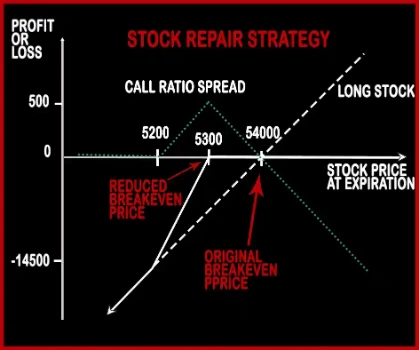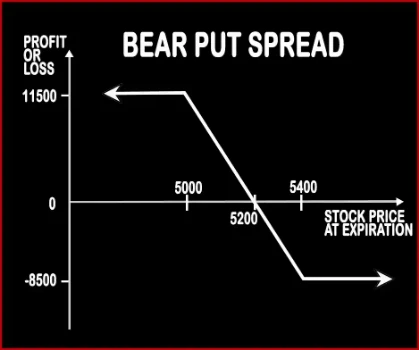Compare Strategies
| STOCK REPAIR | BEAR PUT SPREAD | |
|---|---|---|

|

|
|
| About Strategy |
Stock Repair Option StrategyStock Repair Strategy is used to cover up for losses made on long stock position. After the long position suffered losses on stock price fall, a trader will implement this strategy in order to bring down the breakeven price and capping his further losses thereby increasing his probability of loss recovery. Suppose Mr. X has |
Bear Put Spread Option StrategyWhen a trader is moderately bearish on the market he can implement this strategy. Bear-Put-Spread involves buying of ITM Put Option and selling of an OTM Put Option. If prices fall, the ITM Put option starts making profits and the OTM Put option also adds to profit at a certain extent if the expiry price stays above the OTM strike. However, if it falls below the OTM .. |
STOCK REPAIR Vs BEAR PUT SPREAD - Details
| STOCK REPAIR | BEAR PUT SPREAD | |
|---|---|---|
| Market View | Bullish | Bearish |
| Type (CE/PE) | CE (Call Option) | PE (Put Option) |
| Number Of Positions | 3 | 2 |
| Strategy Level | Beginners | Advance |
| Reward Profile | Unlimited | Limited |
| Risk Profile | Limited | Limited |
| Breakeven Point | Strike Price of Long Put - Net Premium |
STOCK REPAIR Vs BEAR PUT SPREAD - When & How to use ?
| STOCK REPAIR | BEAR PUT SPREAD | |
|---|---|---|
| Market View | Bullish | Bearish |
| When to use? | Stock Repair Strategy is used to cover up for losses made on long stock position. After the long position suffered losses on stock price fall, a trader will implement this strategy in order to bring down the breakeven price and capping his further losses thereby increasing his probability of loss recovery. | The bear call spread options strategy is used when you are bearish in market view. The strategy minimizes your risk in the event of prime movements going against your expectations. |
| Action | Buy 1 ATM Call, Sell 2 OTM Calls | Buy ITM Put Option, Sell OTM Put Option |
| Breakeven Point | Strike Price of Long Put - Net Premium |
STOCK REPAIR Vs BEAR PUT SPREAD - Risk & Reward
| STOCK REPAIR | BEAR PUT SPREAD | |
|---|---|---|
| Maximum Profit Scenario | Max Profit = Strike Price of Long Put - Strike Price of Short Put - Net Premium Paid. | |
| Maximum Loss Scenario | Max Loss = Net Premium Paid. | |
| Risk | Limited | Limited |
| Reward | Unlimited | Limited |
STOCK REPAIR Vs BEAR PUT SPREAD - Strategy Pros & Cons
| STOCK REPAIR | BEAR PUT SPREAD | |
|---|---|---|
| Similar Strategies | Bear Call Spread, Bull Call Spread | |
| Disadvantage | • Management required with all the positions. • Additional loss due to continuous decline in shares as downside risk remains unchanged. | • Limited profit. • Early assignment risk. |
| Advantages | • This strategy creates an opportunity to recover losses by lowering our breakeven. • No margin required. • No additional downside risk and costs nothing to put on. | • If the strike price, expiration date or underlying stocks are rightly chosen then risk of losses would be limited to the net premium paid. • This strategy works well in declining markets. • Limited risk. |